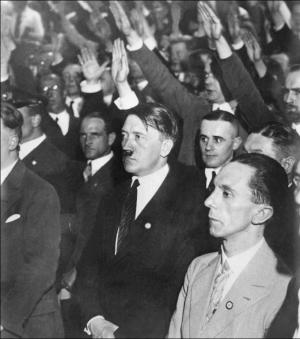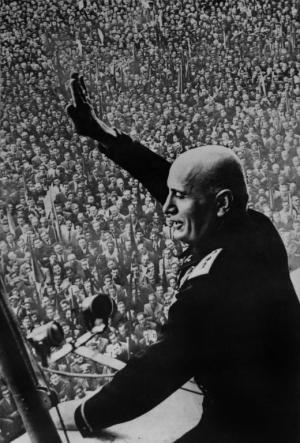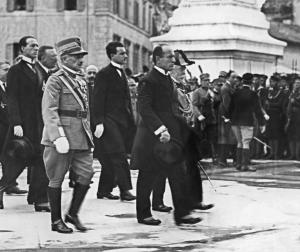Paris (AFP) - "It will have blood; they say, blood will have blood."
The line from Shakespeare's Macbeth might easily have been written about the legacy of World War I.
As the guns fell silent in 1918, the victors all agreed on one thing: Germany must pay.
How
much was a matter of debate but there was never any doubt that the
post-war settlement enshrined in the Treaty of Versailles was going to
be punitive.
Germany did pay, but it was not alone. A century on,
the world lives with the consequences of a peace accord that, even at
the time, was criticised as making another war in Europe inevitable.The economist J.M. Keynes, then a British Treasury official, resigned rather than be associated with a Treaty he denounced as "Carthaginian" in its harshness. France's Marshal Ferdinand Foch judged it "not so much a peace as a 20-year armistice."
The "war to end all wars" turned out to be the exact opposite. By ensuring Germany's economic ruin and political humiliation, the post-war settlement laid the foundations -- or at least provided fertile ground -- for the rise of Nazism and the horrors that ensued.
- Famine, Terror and the Cold War -
Just as important, the war served as the incubator for the 1917 Russian Revolution.
Against a backdrop of desperate food shortages, military failure left the Tsarist state crippled and vulnerable to an assault by Lenin's Bolsheviks.
A civil war ensued in which the Western powers offered backing for counter-revolutionary forces. But war-fatigue restricted the scale of intervention and ultimately Lenin and co. won and established the Soviet Union as an authoritarian Communist state.
Disastrous agricultural policies resulted in more than three million people dying in the famine of the early 1930s, millions more under the Great Terror unleashed by Lenin's successor, Joseph Stalin.
By the mid-1930s, all the conditions were in place for the post-World War II division of Europe.
That in turn produced the Cold War and its associated carve-up of the rest of the planet into Western or Soviet spheres of influence and an unstable global equilibrium that helped to fuel countless conflicts across the developing world.
- A lasting mark on the Middle East -
The first World War also left a lasting mark on the Middle East. By encouraging an Arab revolt, Britain helped precipitate the collapse of the Germany-allied Ottoman Empire.
A secular Turkey emerged and Britain and France assumed post-war control of much of the Arab world.
By then, Britain had also declared, through the 1917 Balfour declaration, its support for the principle of a Jewish state on land it had pledged to the Arabs.
The creation of Israel might still have never happened but, by the end of WWI, it was a much more realistic prospect than it had been at the start.
The collapse of the Ottoman Empire also resulted in the killing of up to 1.5 million Armenians in what they see as a genocide.
The world's muted response to the massacres is credited by some historians with inspiring Hitler to think he could get away with annihilating the Jews.
- A new social order -
Events in Russia cast a long shadow over the rest of Europe, generating a fear of upheaval that helped accelerate reforms while also inspiring other revolutionaries, including the nascent fascist movement that was soon to seize power in Italy.
Worker uprisings in Germany and Hungary in the immediate aftermath of WWI were crushed or collapsed internally.
But waves of militancy in other countries -- in the Fiat factories of Turin, Italy or the shipyards of Scotland's Red Clydeside -- delivered major advances in terms of working conditions and the rights of trade unions to represent their members.
More
broadly, the aftermath of World War I was a period of rapid social
progress in much of the industrialised world. This was most notable in
terms of women's right to vote, which, in the popular memory, is often
seen as having been "earned" through female participation in war-related
activities.
This version of
events is challenged by some historians who argue that political moves
towards equal voting rights were underway before 1914 and may actually
have been delayed by war.
The
notion of women entering the industrial workforce for the first time as a
result of the war is also one that has been challenged recently.
Less
obvious positive legacies of a war which left millions maimed or
traumatised were greater social acceptance of people with disabilities
and the destigmatisation of mental illness.
Some
art historians have described the war as having interrupted a great
artistic flowering that occurred in the opening decade of the century.
But it undoubtedly also spurred new waves of creativity.
Poetry
was revived as an art form across the world, Dadaism, the avant-garde
art movement, was born and led in turn to Surrealism, and Jazz, brought
to Europe by American soldiers, became the soundtrack for the escapism
and innovation of the "roaring '20s".




No comments:
Post a Comment